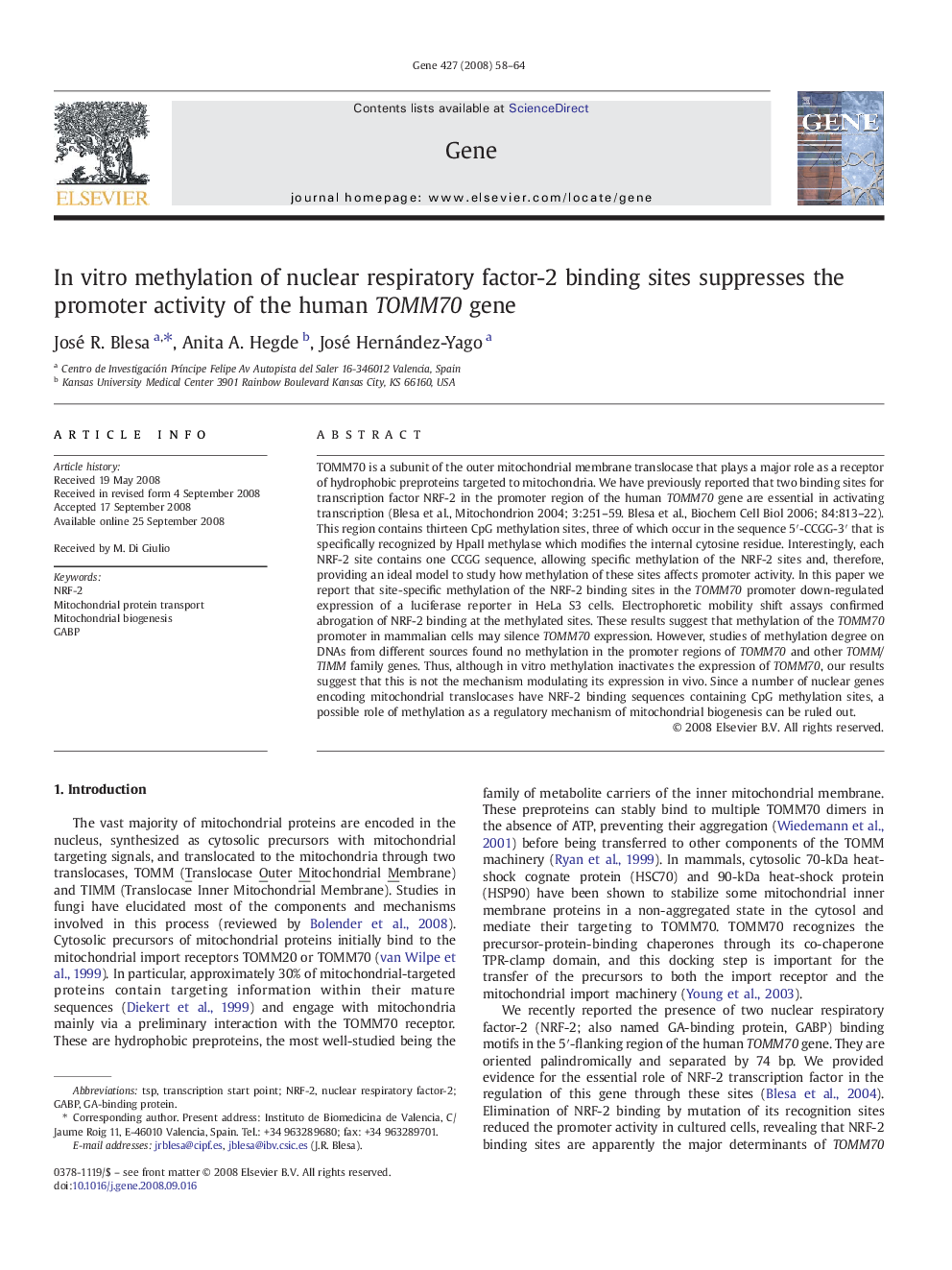| Article ID | Journal | Published Year | Pages | File Type |
|---|---|---|---|---|
| 2819081 | Gene | 2008 | 7 Pages |
TOMM70 is a subunit of the outer mitochondrial membrane translocase that plays a major role as a receptor of hydrophobic preproteins targeted to mitochondria. We have previously reported that two binding sites for transcription factor NRF-2 in the promoter region of the human TOMM70 gene are essential in activating transcription (Blesa et al., Mitochondrion 2004; 3:251–59. Blesa et al., Biochem Cell Biol 2006; 84:813–22). This region contains thirteen CpG methylation sites, three of which occur in the sequence 5′-CCGG-3′ that is specifically recognized by HpaII methylase which modifies the internal cytosine residue. Interestingly, each NRF-2 site contains one CCGG sequence, allowing specific methylation of the NRF-2 sites and, therefore, providing an ideal model to study how methylation of these sites affects promoter activity. In this paper we report that site-specific methylation of the NRF-2 binding sites in the TOMM70 promoter down-regulated expression of a luciferase reporter in HeLa S3 cells. Electrophoretic mobility shift assays confirmed abrogation of NRF-2 binding at the methylated sites. These results suggest that methylation of the TOMM70 promoter in mammalian cells may silence TOMM70 expression. However, studies of methylation degree on DNAs from different sources found no methylation in the promoter regions of TOMM70 and other TOMM/TIMM family genes. Thus, although in vitro methylation inactivates the expression of TOMM70, our results suggest that this is not the mechanism modulating its expression in vivo. Since a number of nuclear genes encoding mitochondrial translocases have NRF-2 binding sequences containing CpG methylation sites, a possible role of methylation as a regulatory mechanism of mitochondrial biogenesis can be ruled out.
